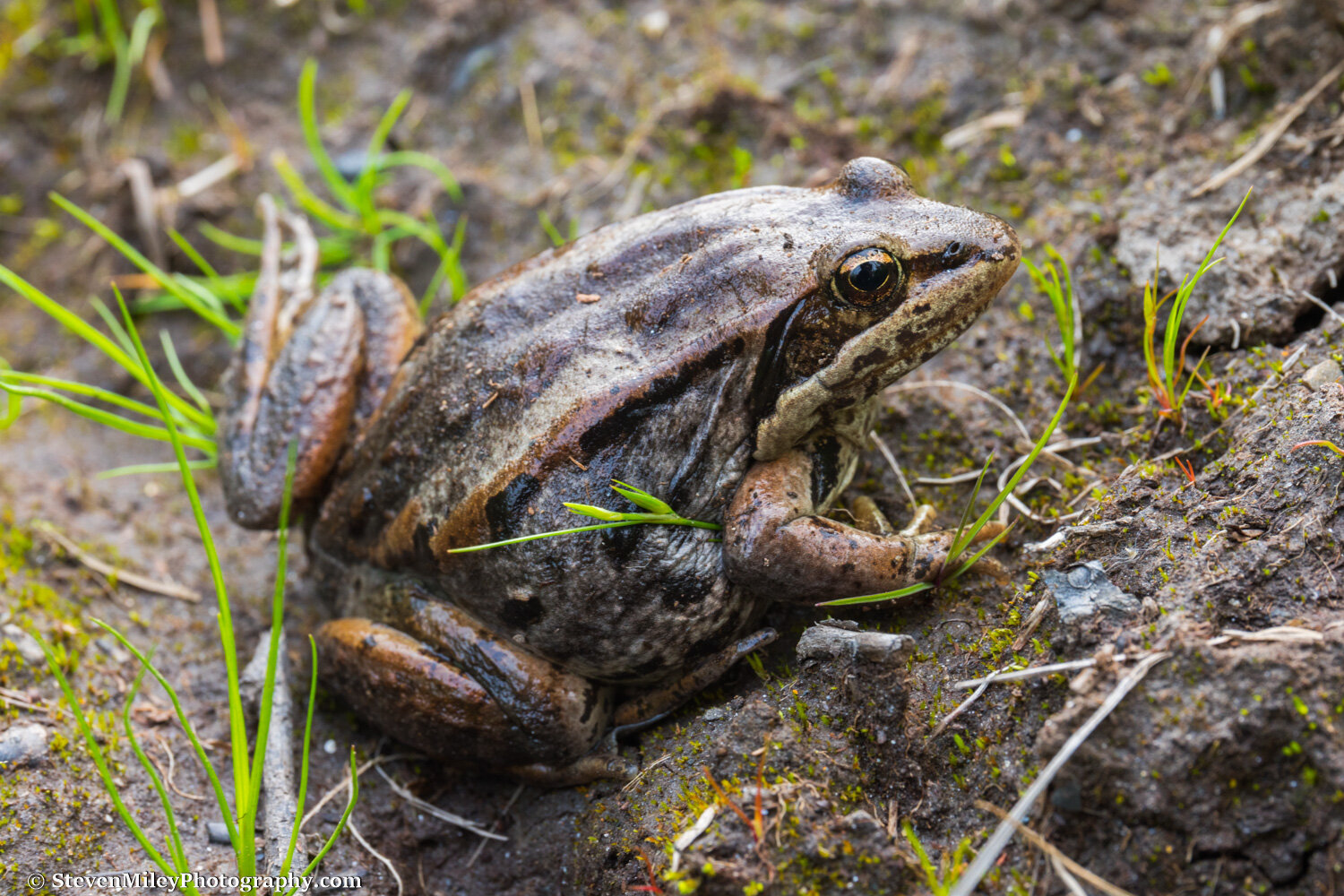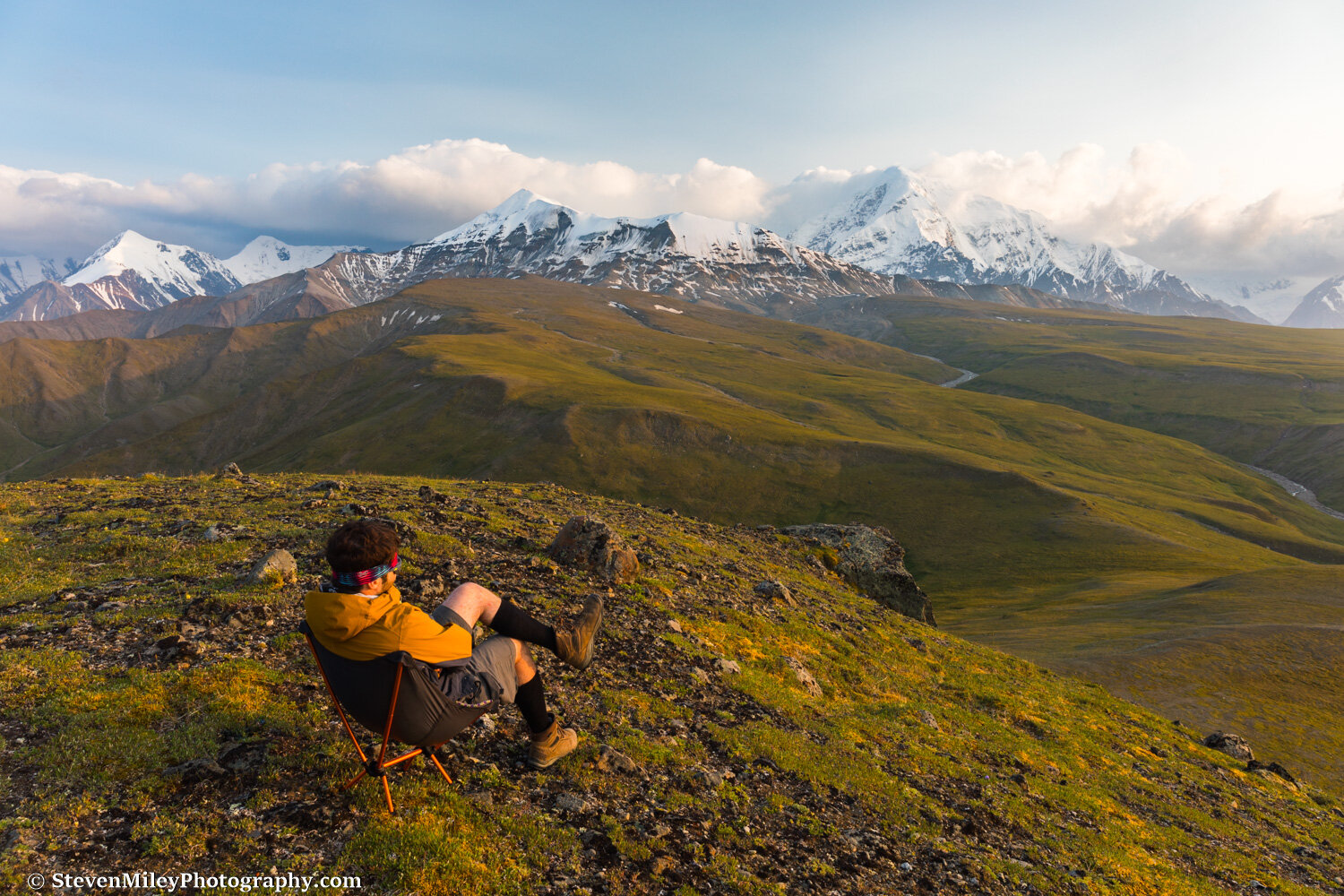During 2021, I retired my Canon 5D Mark IV and upgraded to mirrorless, investing in several new camera bodies and lenses from both Sony and Canon. The aurora came out of its 11-year solar cycle slump and danced frequently throughout the year. I took what may be the first ever shot of a packrafter in front of Denali on the McKinley River. I also finally returned to Trident Glacier to to take all the photos of that area I wish I could have during my 2018 traverse from Black Rapids to Healy. And my guiding business kept me quite busy through much of the winter and fall seasons. Here are my favorite shots from the year, in no particular order.
1. Canwell Glacier Ice Cave
Last summer I found a new ice cave in the middle of Canwell Glacier that glowed beautifully. I guided several customers there in July, August, and September so I got to watch it change slowly as it melted over the summer. (Check my hiking tours page for more info.) I like this particular shot because of the pattern of cracks in the ice and the vivid blue color.
2. Snow & Fall Colors
Winter arrived early in Delta Junction last year. In fact, it arrived before fall was over. Heavy snow fell in September and it never fully melted. This created a unique opportunity to photograph fall foliage with snow. I took this shot with my Sony FE 135mm f/1.8 GM lens, which excels at macro shots of larger objects and has quickly become one of my favorite landscape lenses, even if most would consider it a portrait lens.
3. Packrafting the McKinley River
You’d think a shot like this would have been done before, but as far as I can tell it hasn’t. The McKinley River provides sweeping views of Denali and the Alaska Range, but prospective paddlers will have trouble finding any information about the river and lugging a raft there is a complicated endeavor. I took this shot after crossing Muldrow Glacier and floating from near the toe of the glacier to the McKinley Bar Trail. You can read more about that adventure here.
4. Donnelly Dome Aurora
I carried a new Sony a7S III camera up Donnelly Dome with a gimbal to practice shooting aurora video near the end of aurora season in mid-April. My buddy Brian came with me and we were treated to an amazing show on the climb up. The aurora was a bit lackluster while we were on top of the mountain, but it lit up briefly just as we started back down. You can watch video from this night here.
5. Mount Moffit Sunset Selfie
While photographing sunset high on a ridge above Trident Glacier, I saw the small rock pedestal in this photo still being hit by the sun after the other surrounding rocks had fallen into the shadows. I raced to set up this selfie shot and somehow accidentally set my aperture to f/18, but the shot still looks sharp, diffraction notwithstanding. That’s Mount Moffit viewed from the northeast with a spectacular icefall running below. Read more about this photography expedition here.
6. 40 Below Aurora
I don’t know the exact temperature when I took this photo, but it was no warmer than -35°F. Absolutely bonechilling. I remember having to walk briskly up and down the snowy road I was parked along a few times to stay warm. I was guiding another photographer and our camera batteries kept dying every 20 minutes or so. But when the aurora suddenly began erupting I forgot about the cold and immediately dove into thigh-high powder snow to capture this display unimpeded by trees and without the road in the frame. I didn’t have time to extend the legs on my tripod or attempt to find solid footing for it, so my camera was less than a foot above the surface of the snow with most of the tripod buried in snow. I was shooting with a 35mm lens so the trees in the foreground are a bit out-of-focus but I don’t feel like that matters with such an amazing aurora. If I were shooting wider those curves in the aurora just wouldn’t look as stunning.
7. Black Rapids Glacier
For a couple years now I’ve been taking a handful of customers in good shape with plenty of hiking experience to Black Rapids Glacier. One of my customers in March was my former coworker Gary. We enjoyed absolutely perfect weather that day, and the surface of the frozen lake in front of the glacier was mostly exposed. I feel like I’m on another planet when I’m hiking around Black Rapids Glacier, and I feel like this shot captures some of that otherworldly feeling. See my winter tours page for tour info.
8. Mount Moffit Sunrise Selfie
Similar to shot #5 above, this aspect shows Mount Moffit at sunrise viewed from the north. A handful of climbers may recognize Moffit’s “Entropy Wall” in this shot. I love the staggering size of Moffit and could spend an entire summer taking different shots like this. In hindsight, I wish I had placed the tripod a bit higher up so I would have contrasted better against the shadowy area on the mountain, but I can’t recall if that was even possible with the cliff bands out of frame to the right.
9. Mount Hayes Sunset
After taking some nice reflection shots of the Alaska Range at Donnelly Lake before sunset, I was winding over the hills above the lake looking for a nice spot to camp away from the wretched mosquitoes. I saw Mount Hayes peeking through the trees and took this shot handheld on a whim. I ended up liking it more than the tripod shots I took beside the water. The trees in the foreground add some depth to the image and frame the mountain nicely.
10. G3 Aurora
On the night of November 3, 2021 a powerful solar storm hit Earth causing one of the best aurora displays I’ve ever seen, and definitely the best one I’ve seen in several years. I was busy shooting video during some of the craziest moments, but when the aurora was less intense and moving more slowly I focused on taking photos. The color in the aurora was really amazing that night. You can see the video I shot from that night on YouTube here.

















